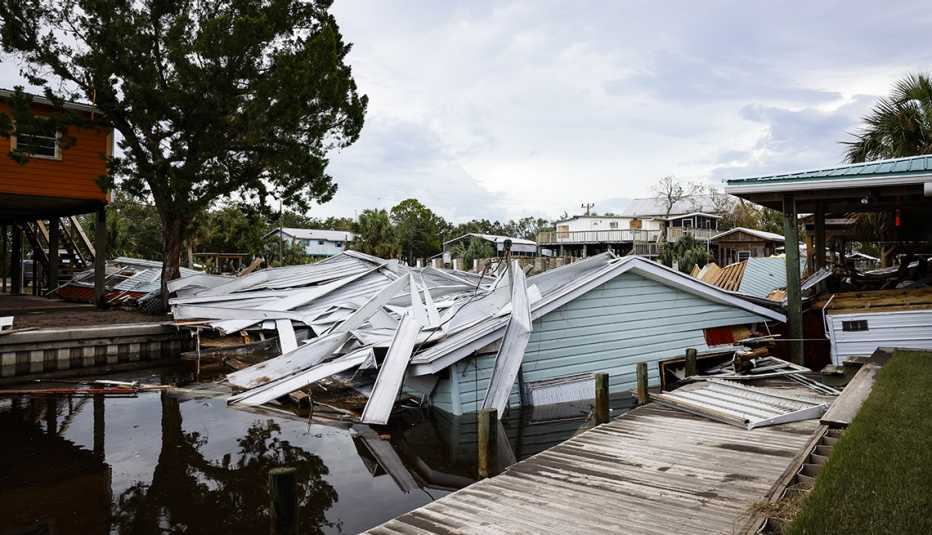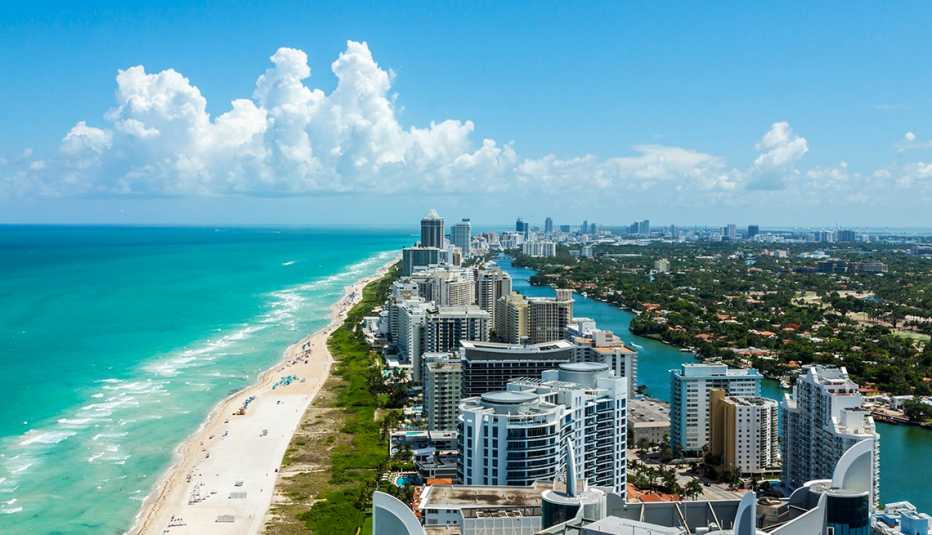AARP Hearing Center


Trisha Torrey and her husband, Butch Kritsberg, took a well-trodden path when they retired in 2016, relocating from the chilly Northeast (in their case, central New York state) to balmy Florida (the Orlando area). For the most part, they haven’t been disappointed.
“Winters are wonderful, especially for golfers and anglers and those of us who enjoy fair-weather sports,” says Torrey, 72. “It’s sunny every day. Even on the days we get a lot of rain, with few exceptions there are at least a few hours that are sunny.”
That upbeat outlook reflects the Sunshine State’s perennial status as the top landing spot for retirees seeking a post-career reboot. In 2021, about 78,000 more people ages 60 and older moved into Florida than moved out, according to personal finance site SmartAsset’s annual “Where Retirees Are Moving” study, which is based on U.S. Census Bureau migration data — more than the next four most popular states combined.
But is retirement in Florida all sunshine and oranges? Of course not. Older adults mulling the move must leaven their dreams of endless days on the beach or the golf course with a heaping helping of reality. Even the fabled weather has a dark side, as Floridians were reminded in late August when Hurricane Idalia, fueled in part by rising ocean temperatures, slammed into the state.
Any interstate move involves carefully weighing the pros and cons, especially when the target is a state of such extremes. Here are five big benefits of jumping on the Florida bandwagon, and four reasons to consider getting off.
Pro: The weather
They don’t call it the Sunshine State for nothing. Florida’s climate — subtropical in the northern part, tropical down south — has long been a major draw for retirees, especially winter-weary Northerners.
With an average annual temperature around 72 degrees, it’s the warmest state in the continental U.S. Winters in southern Florida are downright balmy, with January highs in the 70s around Miami, Fort Lauderdale and Sarasota. Summer, as defined by the National Weather Service, typically lasts from mid-May all the way to mid-October. Miami, Tampa and Key West rank among the sunniest cities in the U.S.


Con: The weather
Be careful what you wish for, sun-seekers. Florida summers are simply “hot, hot, hot,” Torrey says. “I used to tell my friends that at least we don’t have to shovel 90 degrees! But even that begins to wear thin in that kind of heat.”
Add in the humidity — with the Atlantic Ocean on one side and the Gulf of Mexico on the other, this is the most humid state in the nation, according to the Florida Climate Center at Florida State University — and the reality for many retirees is limiting outdoor activity to early mornings and evenings.
It isn’t merely a matter of discomfort. Older adults are at greater risk for heat-related illness and death, making them particularly vulnerable to health impacts from climate change, the U.S. Environmental Protection Agency says. Aging bodies are less able to notice temperature changes or feel thirsty, increasing their susceptibility to dehydration, heat exhaustion and heat stroke, according to the University of Central Florida College of Medicine.
Hurricane season runs half the year, from June 1 to Nov. 30, with an average of three major hurricanes (category 3, 4 or 5) per year, according to the National Oceanic and Atmospheric Administration (NOAA). Hurricane Ian, which slammed into the Gulf Coast in September 2022, was the third-costliest natural disaster in U.S. history, causing nearly $113 billion in damage and 152 deaths.
Pro: Taxes
Let’s start with state income taxes — as in, there aren't any. Your 401(k) distributions, Social Security benefits, earnings from that post-career consulting gig — none of it goes to Tallahassee. Snowbirds who stay for the shoulder months may be able to establish residency and take advantage of Florida’s tax-friendliness.






































































More From AARP
6 Hidden Gems in Orlando, Florida
Venture beyond the theme park gates to explore some lesser-known spots in central Florida5 Best Reasons to Retire to Georgia
Could the Peach State be your future home?5 Reasons to Consider a Retirement Relocation
Change of scene could stretch savings, reboot lifestyle